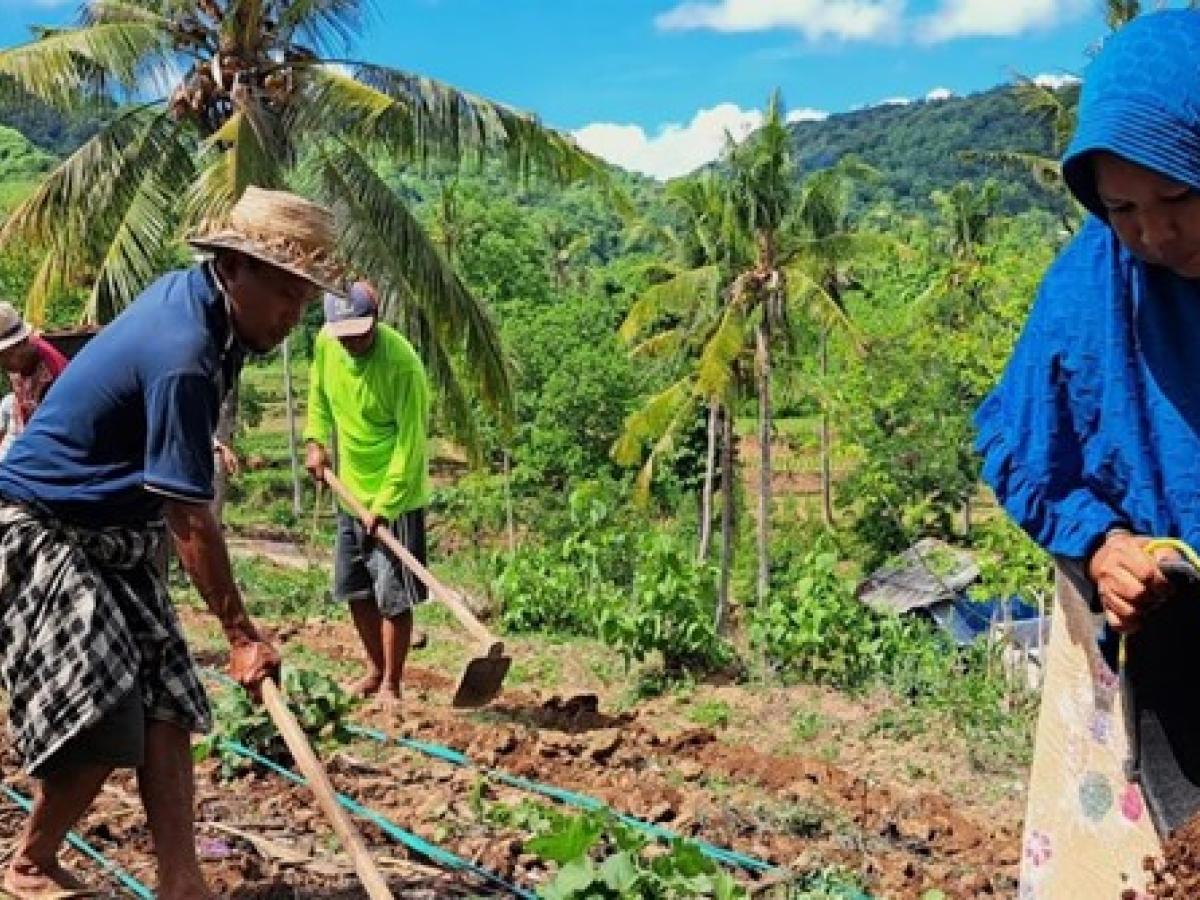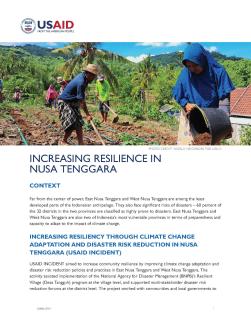CONTEXT
Far from the center of power, East Nusa Tenggara and West Nusa Tenggara are among the least developed parts of the Indonesian archipelago. They also face significant risks of disasters – 60 percent of the 32 districts in the two provinces are classified as highly prone to disasters. East Nusa Tenggara and West Nusa Tenggara are also two of Indonesia’s most vulnerable provinces in terms of preparedness and capacity to adapt to the impact of climate change.
INCREASING RESILIENCY THROUGH CLIMATE CHANGE ADAPTATION AND DISASTER RISK REDUCTION IN NUSA TENGGARA (USAID INCIDENT)
USAID INCIDENT aimed to increase community resilience by improving climate change adaptation and disaster risk reduction policies and practices in East Nusa Tenggara and West Nusa Tenggara. The activity assisted implementation of the National Agency for Disaster Management (BNPB)’s Resilient Village (Desa Tangguh) program at the village level, and supported multi-stakeholder disaster risk reduction forums at the district level. The project worked with communities and local governments to develop and implement comprehensive disaster management action plans and policies, including disaster contingency plans and local early warning systems.
USAID INCIDENT also worked with communities and households in vulnerable areas to improve financial resilience and prepare for the impacts of climate change and disasters through improved agricultural practices. The activity trained farmers in sustainable agricultural techniques, including conservation agriculture, drought-resilient local crop cultivation, integrated pest management, and agroforestry. To strengthen disaster preparedness and encourage household economic stability, USAID INCIDENT empowered women to establish microfinance groups, fostering improved disaster preparedness, household economic stability, and opportunities to establish micro-businesses.
KEY RESULTS
During its implementation between 2022-2024, USAID INCIDENT achieved the following notable results:
- Trained community groups in 64 villages to lead risk assessments and develop and implement village-level action plans for disaster risk reduction, climate change adaptation, and natural resource management;
- Conducted 133 village-level disaster response simulations involving more than 5,000 participants (including more than 2,000 women), which enhance local capacity to handle emergency situations;
- Strengthened the ability of more than 71,000 people (more than half of them women) to adapt to the effects of climate change through training on improved agriculture practices;
- Developed a smart-phone application to provide farmers detailed short and long-term weather forecasts, as well as recommendations on planting times and suitable crop varieties; and
- Worked with 196 saving and loan groups, representing more than 3,500 members, to improve the financial services offered in their communities.
CONTACT
Munkhzaya Badarch, USAID at mbadarch@usaid.gov
Edd Wright, World Neighbors at ewright@wn.org


